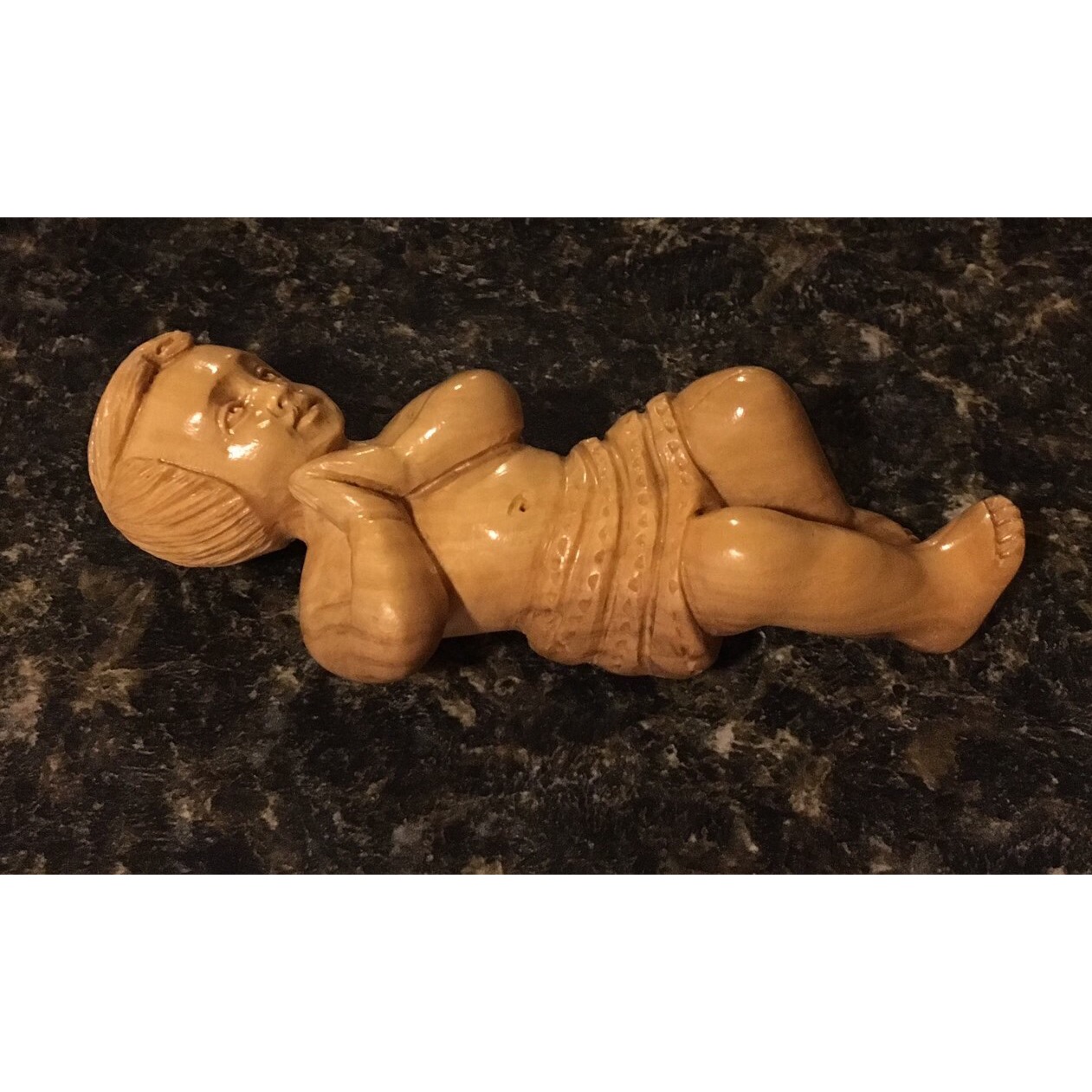My second-grade teacher, Sr. Mary Francis, burst my childhood bubble when, a few weeks before Christmas, she asked her class of eight-year-olds, “Did Baby Jesus cry?” I shot my hand up and was the first to answer (some things never change…): “No!” I proudly pronounced. “Yes, He did,” she kindly corrected me. “Because He was a human baby similar to us.”
I sat at my little desk stunned, trying to reconfigure the tapes running in my head. Since age 3, every year I had sung all the verses of numerous Christmas carols including “Away in the Manger.” I knew Verse 2 by heart: “The cattle are lowing, the poor Baby wakes. But little Lord Jesus no crying he makes…”
Already as a youngster, my imagination had firmly painted an angelic Baby Jesus, lying in the manger, sweet and mild, with Mary and Joseph piously gazing at Him. All was calm, all was bright. There was no crying. And then Sr. Mary Francis destroyed my naive Nativity Scene and catapulted me into the great Christian adventure of knowing Jesus not only as fully God, but as fully human.
Fast forward four decades and my encounter with St. John Paul II’s encyclical on the Holy Spirit (Dominum et Vivificatem). Written in 1986, it is rarely read or quoted, and yet, it contains some of St. John Paul II’s most elevated Trinitarian theology. I experienced another Sr. Mary-Francis jolt when I read paragraph 50 of this encyclical, which says, “The conception and birth of Jesus Christ are in fact the greatest work accomplished by the Holy Spirit in the history of creation and salvation…” (DV, no. 50)
The tapes running through my 40-something mind were stunned again. If you had asked, “What is the greatest work of the Holy Spirit in the history of humanity?” I would have shot up my hand and immediately answered, “Raising Jesus from the dead!” And you would have kindly corrected me by saying, “No, it was the Incarnation.”
The Incarnation? Why is the conception and birth of Jesus Christ the greatest work of the Holy Spirit in human history? Isn’t raising Jesus from the dead more impressive than a baby in the manger? I momentarily pouted, and then finished reading to the end of the sentence: “[the conception and birth of Jesus Christ are] …the supreme grace – ‘the grace of union’ – source of every other grace…”
The greatest work of the Holy Spirit in the history of humanity is the union of divine nature and human nature in the Incarnation: this is the supreme grace, source of every other grace. The Incarnation is not an angelic baby sleeping meek and mild, but the dynamic and powerful event of uniting divinity and humanity in the flesh of this Baby. My favorite Byzantine theologian, Archbishop Joseph Raya, offers us another Sr. Mary-Francis moment in his book Abundance of Love where he writes, “God the Father gave a human nature to his Son. The human body is, therefore, the most precious gift God can offer – besides his own Self” (p. 13).
The human body, our flesh, is the most precious gift in history that you, I, and even the Son of God, have ever received from the Fatherhood of God. Our bodies contain a natural goodness that elicit a supernatural delight in the heart of God. And yet, how often do we consider the “flesh” as the enemy of God instead of the most precious gift entrusted to us by the Father? In fact, Archbishop Raya says “Body and soul are wedded in love. The body is a bride.” (p. 19)
Have you ever thought of your body as a bride, as the “spouse” of your soul? As your soul’s soul mate? At the moment of your conception, a wedding took place – the wedding of your body (your physical matter) to your soul (your spiritual capacity). Plato, not our Judeo-Christian heritage, taught that the gods punished the soul by trapping it in matter. For them, the body was toxic and unnatural to the soul. It was an impediment to our spiritual capacities, an unwelcomed intruder.
But Christmas and Archbishop Raya remind us of God’s revealed truth: body and soul are fashioned for each other like two lovers who can’t stand to be apart. In God’s beautiful and adventurous design, the physical and spiritual are meant to go together. In the Incarnation, the human body becomes the bride of Christ. God and man are wedded in the very flesh of Jesus of Nazareth.
So often, we think of the Incarnation as Plan B – that after Adam and Eve sinned, God convened a holy huddle in heaven to strategize a remedy for sin, and the Second Person of the Blessed Trinity unselfishly volunteered to become man, die on the cross, forgive our sins, and phew…the problem is solved.
This scenario makes sin the motive for the Incarnation. In other words: no sin, no Incarnation. But Blessed John Duns Scotus proposed a different motive for the Incarnation: the motive is love. In a homily on Bl. Scotus’ feast day in 2010, Pope Benedict XVI offered a beautifully concise summary of this shift in perspective, “…in the opinion of Duns Scotus,” he said, “the Incarnation of the Son of God, planned from all eternity by God the Father at the level of love, is the fulfilment of creation…. [It] is God’s original idea of ultimately uniting with himself the whole of creation, in the Person and Flesh of the Son.”
The Incarnation as God’s eternal plan reminds me of Ephesians 1:3, “Blessed be the God and Father of our Lord Jesus Christ…who chose us in him [Christ] before the foundation of the world…” To my mind, this means the shape and form of the human body is not incidental nor determined arbitrarily by evolution. We are not fundamentally evolved apes. The shepherds and wise men did not travel to Bethlehem to adore a highly evolved ape. They adored the God-man for whom the human body was the natural expression of God’s love.
Even from before the foundation of the world, the Perfect Union and Communion of the Trinity designed matter and spirit – body and soul – to be united in an intimate bond of love. Christmas definitively reveals that our human nature was always created with the Incarnation in mind – for a union and communion between God’s spiritual nature and our embodied human nature in the Word made flesh. God’s eternal plan was to make a total and irrevocable gift of self to us in his Beloved Son so that the two, us and God, human nature and divine nature, could be united as one body.
St. John Paul II captures this unitive capacity of our human nature in his unassuming term, “the unitive power of the body.” In the Theology of the Body A55:6, he describes how Adam and Eve experienced in a simple way, “the unitive power of their bodies that was, so the speak the ‘unsuspectable substratum’ of their personal union or communio personarum.” I think you can see why this quote probably won’t make it into your church bulletin this Christmas.
Put simply, Adam and Eve experienced the unitive power of their human nature, a power that enabled them to enter deeply into a personal union and communion. In other words, they entered into a deeply bonded, indissoluble covenant of love because their bodies contained the “unitive” capacity to do so, both physically and spiritually. JP2’s point is that this unitive power is part of every person’s human nature. Your body and mine are created with the capacity to unite, to bond, to forge deeply covenantal relationships, both physically and spiritually.
Allow me to interject a little bit of science here. I am fascinated by the rising tide in psychology of “attachment theory,” which studies the neuroscience of human bonding (think: unitive power of the body). In her book entitled, Love Sense, psychologist Sue Johnson summarizes her findings: “…forming a deep mutual bond with another is the first imperative of the human species.” (p. 39) In fact, she concludes, we should call ourselves not Homo sapiens, but Homo vinculum – the “one who bonds.” (cf. p. 25) We are not born callous and competitive, dedicated to our own survival at the expense of others, but to be securely connected to those we love. (cf. p. 24)
Leadership guru Simon Sinek’s popular TED talks and best-selling books are liberally sprinkled with this same bonding approach. One of his favorite refrains is that we are social animals. We are wired not to be isolated and self-sufficient (since we can easily be eaten by a saber-tooth tiger that way), but for bonds of cooperation, trust, and safety. In St. John Paul II’s lingo, we could say that our neurons are wired for “union and communion.” The more we actualize the “unitive power of the body” through bonds of personal communion, the more our neurons fire and the happier and more secure we feel – and thus a greater willingness to make a “sincere gift of self” to others.
Let’s veer back to Christmas and the Incarnation. The completely unanticipated marvel of the Incarnation is that this natural “unitive power of the body” – this power to unite and bond, to be Homo vinculum – can be actualized not only with other human persons, but also with God. By the power of the Holy Spirit, the “unitive power of the body” is actualized in union with God! Miraculously, for it truly is a miracle, a union unexplainable by the laws of physics, “the Divine remains Divine and the human remains human, yet the union is most complete.” (Abundance of Love, p. 10)
This means flesh, human flesh, is not alien to God. Otherwise He could not unite Himself to it without doing violence either to Himself or to our humanity. The human body is indeed the most precious gift God can offer even to his Son in time and space. And, it is a gift offered to each of us so that we can enter into a wedding between the human and divine in our very being through the Holy Spirit living within us.
So this Christmas, when you see Baby Jesus lying in the manger, think wedding! And celebrate with great gusto the wedding between humanity and divinity in the Incarnation. And remember…you are a gift!




